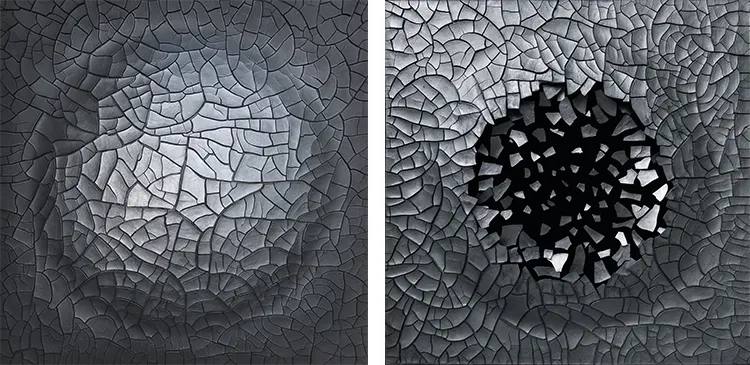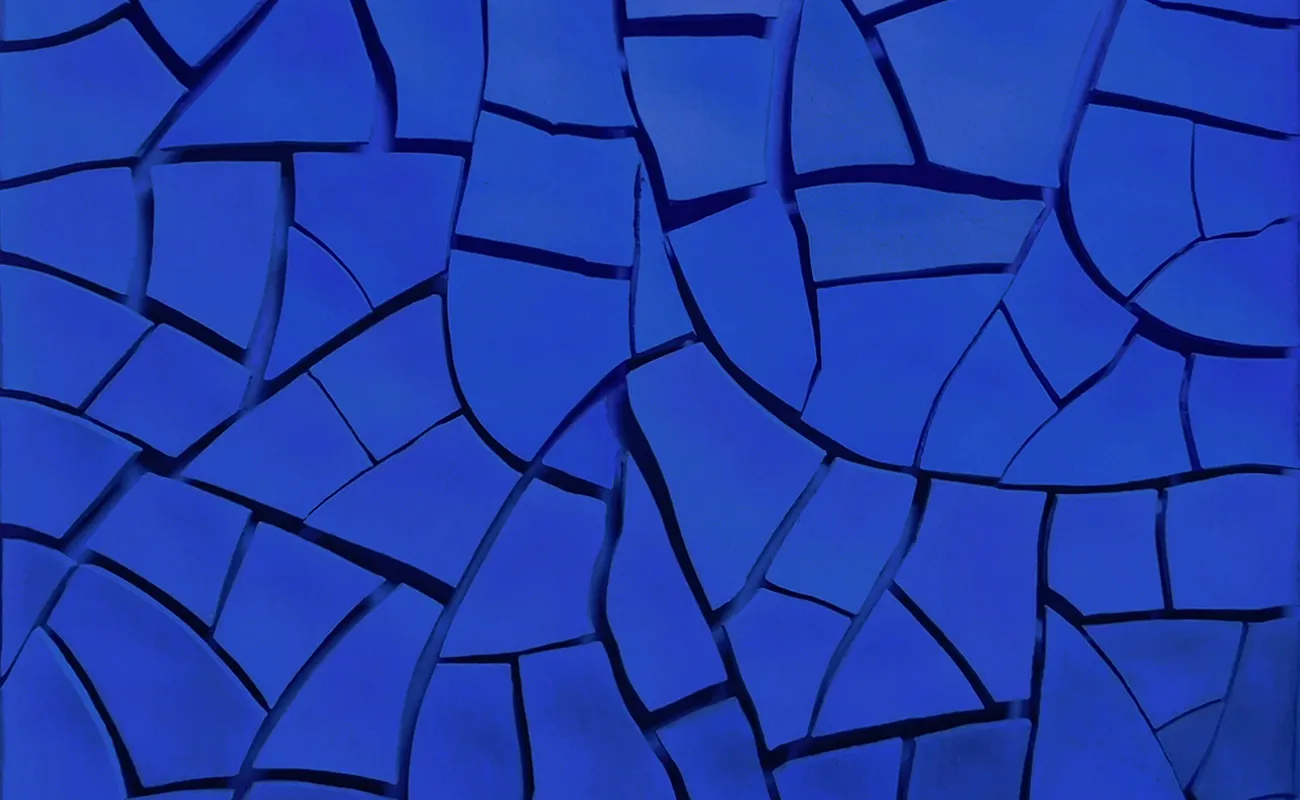“I define my works as ‘picto-sculptures’—three-dimensional paintings or polychrome sculptures designed to be hung on walls.”
A Childhood Shaped by the Natural World
Pin Vega’s artistic journey began long before he ever set foot in a studio. Born in Tarragona, Spain, in 1968—prematurely at seven months and declared clinically dead—his very existence seemed to defy the odds. Whether by fate or sheer determination, he chose to return to life, embarking on a path that would ultimately lead him to art. His formative years were spent in Madrid surrounded by the landscapes of Soto de Viñuelas, near the historic Viñuelas Castle. There, among lush vegetation, rocky terrain, and the intricate world of insects, he developed a deep reverence for nature. This childhood immersion in the organic world was more than just a futile fascination—it became the foundation of his artistic identity.
Spending long stretches at his grandparents’ homes near the Guadalmellato Reservoir in Córdoba and the Esla Reservoir in Zamora further deepened his connection to nature. Coincidentally, both residences were nestled beside water, a recurring element in his life and work. These natural settings, with their still waters and geological formations, provided a rich environment for observation and introspection. Even as a child, he found himself drawn to Japanese aesthetics, cultivating bonsai trees in his garden and admiring the simplicity and precision of traditional Japanese ceramics. The patience required for bonsai cultivation mirrored his approach to art—a meticulous process of shaping, refining, and working in harmony with nature.
At the age of eleven, Pin Vega had an experience that would mark his artistic trajectory. While exploring the Guadalmellato Reservoir, he was mesmerized by the shimmering mineral formations beneath the water. Determined to see them up close, he dove in, immersing himself in their kaleidoscopic beauty. In that moment, he made a promise to himself—one day, he would create works as mesmerizing as those natural formations. This profound connection to the earth’s raw materials would later manifest in his signature “picto-sculptures,” where color, form, and texture converge to create multidimensional artworks.
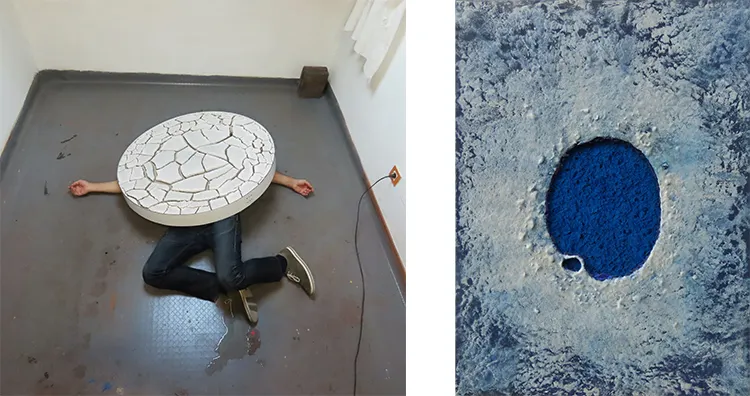
Pin Vega: Picto-Sculptures and the Language of Materiality
Pin Vega’s work defies conventional categorization. His artistic practice exists at the intersection of painting and sculpture, resulting in what he describes as “picto-sculptures”—three-dimensional compositions designed to be mounted on walls. While these pieces may appear as paintings at first glance, their sculptural depth transforms them into immersive experiences, engaging both the viewer’s visual and tactile senses. This hybrid approach reflects his fascination with materiality, as he explores the relationship between color, texture, and structure.
At the core of Pin Vega’s art lies an abstraction deeply rooted in informalism, yet distinctly influenced by the natural world. His work dialogues with the fundamental elements—earth, air, water, fire and the telluric forces that shape the planet—imbuing them with a philosophical weight. The scale of his works often contrasts miniature human figures, rendered at 1:220 or 1:160 scale, against vast, textured landscapes. These tiny figures, barely discernible at first glance, serve as a metaphor for humanity’s fragility in the face of nature’s overwhelming power.
Ecological concerns frequently surface in his relief paintings. Themes of environmental degradation, drought, and the slow erosion of the planet appear throughout his work, offering a visual commentary on the consequences of human intervention. His compositions evoke barren, desolate terrains, stripped of life by industrial expansion and reckless exploitation. Yet, rather than adopting a purely dystopian vision, Pin Vega’s work also suggests a reverence for nature’s resilience—a reminder that, despite humanity’s imprint, the earth endures. His ability to merge artistic expression with environmental consciousness makes his work not only visually striking but also deeply thought-provoking.
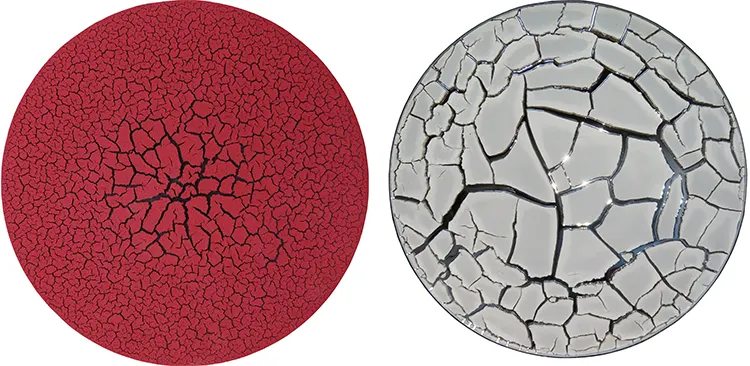
Crafting in a Space of Precision and Intuition
Pin Vega’s creative process is both rigorous and intuitive, requiring a workspace that accommodates his multidisciplinary approach. His studio is an environment of controlled chaos, where tools line the walls in careful arrangement while an eclectic assortment of materials—powdered pigments, resins, varnishes, and wooden panels—fill the space. This organized disorder mirrors the balance in his work: a fusion of raw, organic elements with precise craftsmanship. Given the scale and complexity of his pieces, he also requires an outdoor workspace, where he can operate power tools, compressors, and airbrush guns to achieve the distinctive finishes of his picto-sculptures.
Beyond his studio, Pin Vega finds solace in his garden, tending to small aquatic ponds filled with fish, amphibians, and water plants. This quiet engagement with living ecosystems parallels the themes in his art, reinforcing his relationship with nature. His passion for bonsai cultivation further influences his artistic philosophy, teaching him patience, discipline, and the value of long-term vision. In many ways, shaping a bonsai is akin to his sculptural practice—it requires an understanding of form, structure, and growth, guiding the natural process rather than imposing upon it.
His artistic influences are as varied as his techniques. The work of Anish Kapoor, which he first encountered in the early 1990s, left an indelible mark on his practice. Kapoor’s exploration of materiality, space, and color resonated with Pin Vega’s own artistic inquiries. Other significant inspirations include Olafur Eliasson, Angela Glajcar, and Wolfgang Tillmans, each of whom shares a fascination with spatial perception and the interplay of light and material. While Pin Vega’s work is distinct in its execution, these influences have shaped his approach, encouraging him to continually push the boundaries of his medium.
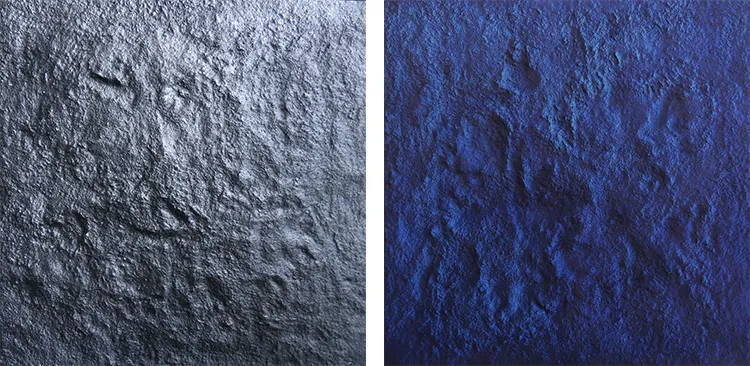
Pin Vega: “Monolito” and the Legacy of Form
Among the works that define Pin Vega’s career, “Monolito” holds a place of special significance. Part of his “Polyhedron” series, this large-scale picto-sculpture exemplifies his mastery of form and material. Built on a lightweight yet structurally intricate wooden framework, its exterior is coated in finely ground black slate, lending it an enigmatic, almost celestial presence.
Inspired by the iconic monolith in Stanley Kubrick’s 2001: A Space Odyssey, itself derived from Arthur C. Clarke’s writings, “Monolito” carries an air of mystery and timelessness. Its surface, resembling obsidian or black crystal, seems impervious to time, evoking the concept of an artifact beyond human comprehension.
The thematic depth of “Monolito” aligns with Pin Vega’s broader artistic philosophy. Clarke’s monoliths symbolize an advanced intelligence, a silent observer of evolutionary progress—an idea that resonates with Pin Vega’s exploration of form and permanence. By reducing geometry to its purest essence, he invites contemplation on existence, the transience of human constructs, and the enduring nature of matter itself.
As his career continues to evolve, Pin Vega remains open to new materials, techniques, and conceptual explorations. Looking ahead, one of his greatest aspirations is to hold a solo exhibition in Japan. The profound influence of Zen aesthetics on his work makes this a fitting ambition. For Pin Vega, art is more than a visual experience; it is a meditation on the natural world, an ongoing dialogue between human creativity and the elemental forces that shape our existence.
